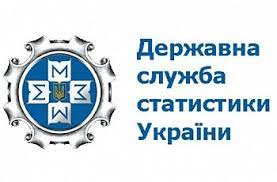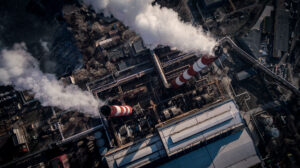
The indicator of business confidence in industry in Ukraine in February 2024 increased by 2 p.p. compared to January 2023 – up to “minus” 9%, while in the processing industry it increased by 3.6 p.p. – To “minus” 8.3%, reported the State Statistics Service.
In turn, the indicator of business climate in industry increased by 0.2 p.p., to +0.2%. – to +0.2%, while in the processing industry increased by 0.4 p.p. to 0.4%. – to 0.4%.
As reported, expectations for business activity prospects in 2023 began to deteriorate in May, when the business confidence indicator stood at “minus” 6.8% and “minus” 5% in industry and processing, respectively, and continued to decline during June-December, amounting to “minus” 13.5% and “minus” 15.6% in December, respectively.
However, in January this year, this indicator increased by 2.6 pp y-o-y to “minus” 11% in December-2023, while in the processing industry it increased by 3.9 pp y-o-y to “minus” 11.8%. – To “minus” 11.8%.
At the same time, the indicator of business climate in industry and processing industry in January, as well as in December-2023 remained at the zero level.
The components for calculations of these indicators have seasonally adjusted values of balances formed on the basis of reports submitted by enterprises. In particular, the assessment of the current volume of orders for production (demand) in industry in February amounted to “minus” 42% (in January – “minus” 44%), in processing industry – “minus” 45% (against “minus” 47%).
In turn, February expectations for output in the next three months improved significantly – in industry they rose to +5% from zero in January-2023, in processing – to +11% from “minus” 1%.
As reported, the best value in 2023 was reached in April-2023 at +10% in manufacturing and +17% in processing.
The estimate of current finished goods inventories in February was “minus” 10% and “minus” 9%, respectively (“minus” 11% and “minus” 12% in January); the estimate of output for the previous three months was “minus” 1% and +1% (“minus” 6% and “minus” 3% in January).
At the same time, the assessment of the current volume of export demand in industry worsened by 2 p.p. to “minus” 31%, and in processing industry remained at the level of “minus” 38%.
According to the statistical agency, the supply of orders of enterprises, still, on average, for four months.
As detailed by the State Statistics Committee, based on the results of the survey of industrial enterprises in February, the growth of selling prices for products in the next three months (February-April) is expected by 31% of surveyed industrial enterprises compared to 33% in January, while the decrease – still 2%; in the processing industry, respectively, 35% and 2%.
At the same time, 25% of industrial enterprises expect in February-April 2024 a decrease in the volume of manufactured products (20% in January), and 20%, as a month earlier, expect growth.
In the processing industry, 28% of respondents expect production growth (8 p.p. more), while 17% of respondents expect a decrease (20% in January).
In the next three months, 17% of the surveyed industrial enterprises expect a decrease in the number of employees, 7% – growth, whereas in January this indicator amounted to 16% and 6%, respectively.
For the previous three months (November 2023-January 2024), 23% of the industrial enterprises noted an increase in production volumes, while a decrease – 31% (in January, respectively, 28% and 29%), and the current volume of production orders (demand) above normal was noted by only 1%, while 39% – below normal and 60% – normal for the season.
The main factor restraining the production is still insufficient demand – its growth in November-January was noted by 19% of industrial enterprises (in processing – 18%), while the decrease was noted by 30% and 32%, respectively.

Industrial enterprises are asking the National Commission for State Regulation in the Spheres of Energy and Public Utilities (NEURC) not to increase the marginal prices (so-called price caps) for electricity on the day ahead market (RDA), intraday market (HRV) and the balancing market to avoid stopping production.
Sources in the market told Interfax-Ukraine that there is a significant possibility of stopping production, in particular, such statements were made on October 12 during a public discussion of the draft decision at the NEURC.
Thus, Alexander Zavgorodniy, Director for Economics and Finance of the Nikopol Ferroalloy Plant (NFP), said that electricity is the main component of the cost of the plant’s products, so the rise in prices will significantly affect the economy of the enterprise.
“Given the likely increase in price caps, rising prices in the electricity market, as well as intentions to increase the cost of transportation and dispatching of electricity, we have decided to stop the operation of the enterprise from November,” the top manager said, adding that the enterprise plans in advance in this case is idle in the winter.
In turn, Oleg Kachko, Deputy Chairman of the Board for Finance of the Zaporozhye Ferroalloy Plant (ZZF), stressed that an increase in price caps will inevitably lead to an increase in electricity prices and, as a result, will lead to an increase in production costs and an inevitable shutdown of the enterprise.
According to him, the increase in price caps will cost the company an additional UAH 1 billion per year. “It is not known where to get these funds, when there are problems with logistics within the country, you need to keep staff, pay salaries. Therefore, in a war, this is not a very right decision,” said the representative of the ZZF.
At the same time, the Dniprozot plant, the only producer of chlorine for Ukrainian water utilities, has been idle since the very beginning of the war. However, due to the technological danger of the production cycle, the enterprise maintains minimal economic activity. However, according to the representative of the company, due to the increase in price caps for electricity costs, Dniproazot will have to stop completely, and the resumption of work will no longer be possible.
The mining industry is also under threat of a complete shutdown. In particular, Alexander Petrovets, Deputy Chief Power Engineer of the Pokrovsky Mining and Processing Plant (PGOK), said that there is a high probability that the enterprise will shut down in November due to an increase in price caps.
“PGOK is a city-forming enterprise, the existence of the city of Pokrovsk depends on our work. We try to work in extremely difficult conditions: the demand for our products is decreasing, the cost of production is growing, there are problems with the purchase of materials for repairs and maintenance of equipment. Therefore, our enterprise can no longer withstand this difficult situation,” the top manager stated.
Vladimir Bodnar, Deputy Chairman of the Board for Economics and Finance of the Marganets GOK (MGOK), recalled that the enterprise is constantly under fire from enemy artillery. However, due to rising costs, the work of the enterprise may stop. “And if price caps rise, then due to the shutdown of a large number of enterprises, there will be no one to sell this electricity to,” Bodnar concluded.

According to the updated draft of the Second Nationally Determined Contributions of Ukraine to the Paris Agreement (NDCs2), CO2 emissions from industrial enterprises of Ukraine will grow by 16% by 2030 from the level of 2019, Minister of Ecology and Natural Resources Roman Abramovsky has said in an exclusive interview with the Green Deal portal.
“According to our calculations, industrial emissions by 2030 will grow by 16% from the level of 2019. That is, they will not decrease. On the contrary, they will increase. However, in this way, the ambitions of key companies to increase the rate of industrial production were taken into account,” the minister said.
According to him, the sectoral goals of NDCs2 for the Ukrainian industry were coordinated with the Ministry of Economy, while noting that it was with this ministry that the most difficult negotiations were going on to agree on the indicators.
“The most difficult discussion was with the Ministry of Economy, since they are responsible for many sectors. At the same time, the new leadership of the Ministry of Economy, First Deputy Prime Minister Oleksiy Liubchenko should be commended, because immediately after his appointment, we met and I explained to him all our forecasts. He immediately appointed a person responsible for NDCs2, and on the second day our team held a briefing for the new managers, “Abramovsky said.
In addition, as the minister said, the Ministry of Ecology also held difficult negotiations with the Ministry of Energy and NPC Ukrenergo, as a result of which the ministry was forced to increase emission standards for the energy sector.
“For example, if initially we modeled an indicator of 34 million tonnes of CO2 emissions in 2030 in the energy sector, then after consultations we came to the conclusion that it would be more correct to envisage 48 million tonnes in 2030, based on the provisions of the System Adequacy Report,” Abramovsky said.